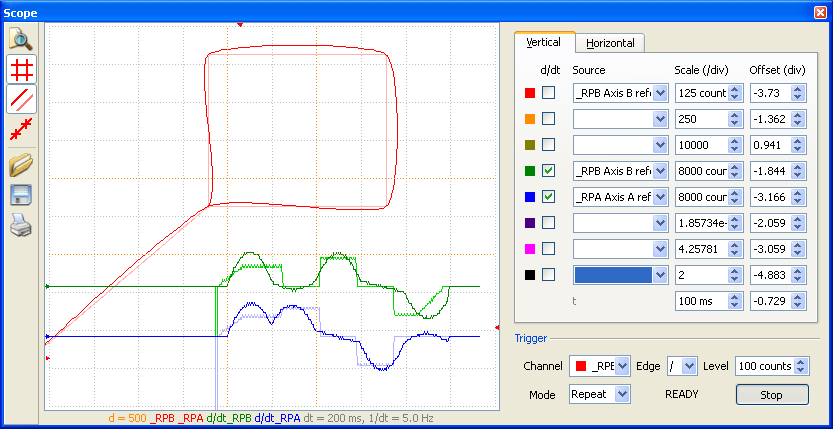The PVT (Position, Velocity, Time) mode of motion on the Accelera series motion controllers allows the user to specify coordinated motion using those three parameters - P, V, and T. The motor controller takes the parameters as the input and outputs the profile that the motors should use to achieve the desired motion. This mode of motion is perfect for users who desire smooth motion but do not require that a strict "path" be followed between each point. A good example of this is the difference between creating the path of a box (as shown in light red below) using Vector Mode versus creating a Spline that goes through the 4 corners of the box but uses a smooth profile to do so (shown in dark red below).
Here are the two programs that were used to accomplish this motion
#VECTOR VS6000 DP0,0 WT1000 VP500,500 VP1000,500 VP1000,1000 VP500,1000 VP500,500 VE BGS EN
versus this program in PVT mode:
DP0,0,0 WT1000 'A LOAD PVA=500,2500,102 PVA=500,1250,102 PVA=0,-1250,102 PVA=-500,-1250,102 PVA=0,-1250,102 'B LOAD PVB=500,1250,102 PVB=0,1250,102 PVB=500,1250,102 PVB=0,-1250,102 PVB=-500,-2500,102 'END MODE PVA=0,0,0 PVB=0,0,0 BT EN
Note that one difference is that PVT mode is in relative terms while Vector Mode is in absolute terms but the other requirement is that the speed needs to be calculated at each point. An effective method to calculate the desired speed is to use an Excel spreadsheet. The one shown here allows the user to enter the absolute position of each point as well as the absolute time in msec for each point:
It then calculates a velocity for each point and converts the PVT data into a format that can be downloaded into the controller.
Click here to download the Excel spreadsheet.




